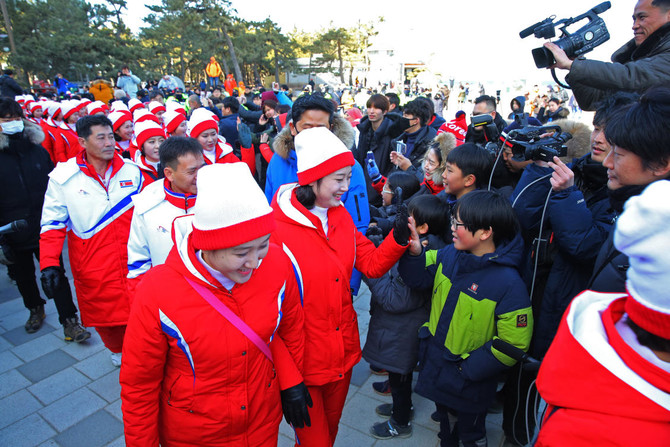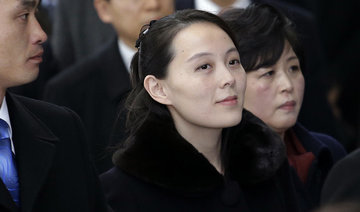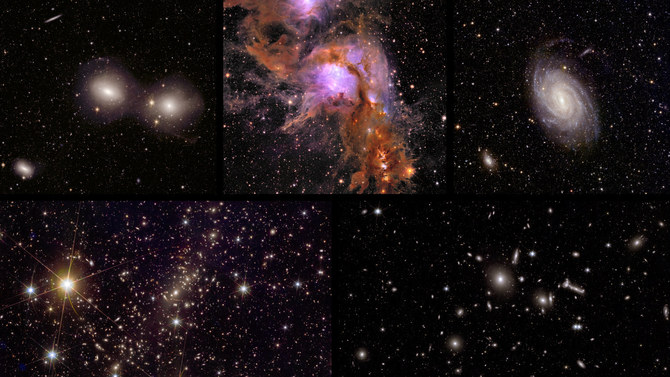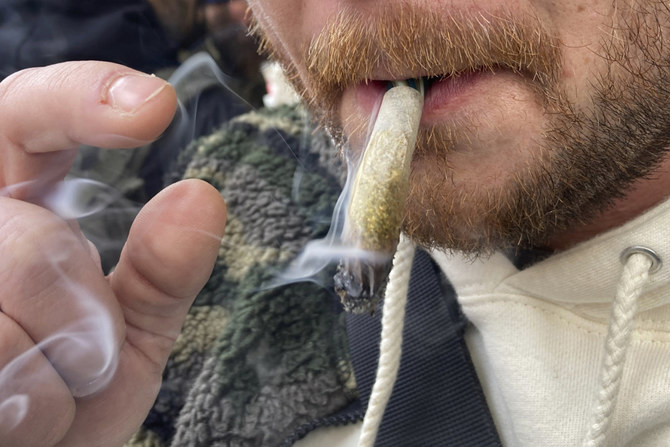GANGNEUNG, South Korea: North Korea’s red-clad “army of beauties” cheerleaders are a key weapon in Pyongyang’s arsenal for its Winter Olympics charm offensive — but to some Southerners they illustrate the cultural divide across the Demilitarized Zone.
The 200-strong group — all in their late teens or early 20s and said to be handpicked from elite universities after strict background checks — chant “Cheer up” at events, clap and wave in unison, and sing traditional songs.
The Koreas’ separation — which dates back nearly seven decades during which the two countries have followed radically different paths — makes citizens of the North an object of some fascination for South Koreans.
“They look just like us,” said Kim Mi-hyun, 59, as the young North Koreans walked by in a neat double line on an excursion to a beach in Gangneung, the east coast city where the Winter Games ice events are being held.
“Looking at them makes me yearn for reunification,” she added, filming the sight on her smartphone.
Others were struck by their chunky trainers and white woolly hats.
“They look like Koreans from a long time ago,” said 30-year-old Lee Jung-hoon.
Younger South Koreans tend to be more wary of the North having spent their adult lives in a culturally vibrant democracy regularly menaced and occasionally attacked by Pyongyang, which stands accused of widespread human rights abuses.
The cheerleaders are under tight surveillance from their Northern escorts, always moving in groups in the presence of a minder and rarely conversing with South Koreans.
They said nothing in response to Southerners’ calls of welcome at the beach, opting instead for a coy smile or friendly wave.
“They don’t speak,” said Yoo Hong-sik, 31, from Daejeon. “I think they received orders not to and that’s disappointing because I would like to interact with them.”
The Northern supporters’ every move is trailed by an army of South Korean journalists, with some camping outside their hotel for photos of the women going for a morning jog or ironing their clothes.
It is the fourth cross-border visit by a North Korean cheer group and the initial enthrallment has changed over time, as Pyongyang pursues the nuclear and missile ambitions which have seen it subjected to multiple rounds of UN Security Council sanctions.
Dubbed an “army of beauties” by the South’s media, there was so much interest in the squad sent for the 2003 Universiade in Daegu that the facility where they stayed was turned into a museum displaying personal items left behind — including unused tampons and empty toothpaste tubes.
On that trip, a tearful group of cheerleaders frantically ran off their bus to retrieve a banner of then-North Korean leader Kim Jong Il that was getting wet in the rain.
In 2005, former North Korean cheerleader Cho Myung-Ae — whose looks had gained her a huge following in the South — appeared in a television commercial for a Samsung mobile phone with South Korean pop star Lee Hyo-Ri.
Now, though, the cheerleaders are part of a charm offensive by Pyongyang aimed, analysts say, at easing the measures against it and trying to drive a wedge between Seoul and its protecting ally Washington.
At the unified women’s ice hockey team’s 8-0 drubbing by Sweden on Monday — which guaranteed its elimination at the group stage — the cheerleaders chanted and waved in red, blue and white tracksuits.
“I hope they come more often,” said Kang Seok-joong, 61, adding the visit would bring the two countries closer together.
But Noh Seung-Hyuk, a 29-year-old office worker in the stands, was disturbed by the Northerners’ lockstep choreography.
“Of course it is nice to see them but they give me the chills,” he said. “Honestly, they feel distant.”
Many older South Koreans on both sides of the political divide harbor a nostalgic longing for some form of reunification — conservatives through the North’s collapse and conquest by the South, liberals through a more amicable arrangement.
But younger people have far less interest in unification and fear its social and economic consequences.
A poll last year found almost 50 percent of over-60s believed the two Koreas can be reunified, while just 20.5 percent of those in their 20s agreed.
“We look the same but I feel bad because they don’t have any freedom,” said Kim Jung-ah, a 22-year-old student from Seoul at the match.
Her friend Lee Eun-mi added: “I think they are very different, they are so robotic.”
As popular girl group TWICE’s “Cheer up” blared from the loudspeakers across the arena, two young South Korean spectators danced jovially.
The North Koreans paused — and began bellowing out a 600-year-old Korean folk song, waving their unification flags in synchronized moves.
“They are like the military, I pity them,” said Lee Min-woo, a 20-year-old student from Seoul.
“I haven’t given any thought to reunification.”





























